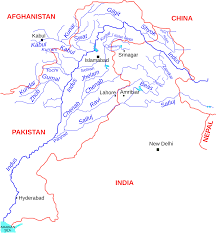Indus Water Treaty: Historical and Contemporary Insights

Introduction
The Indus Water Treaty, signed in 1960 between India and Pakistan, has been a cornerstone of water resource management in South Asia. This treaty is not only vital for the allocation of water from the Indus River and its tributaries but also represents a unique example of bilateral cooperation between countries with a history of conflict. As global water scarcity issues become more pressing, understanding the mechanics and implications of the Indus Water Treaty remains critically relevant.
Historical Background
The origins of the Indus Water Treaty can be traced back to the partition of British India in 1947, which resulted in very different control over the river systems by the two nations. The issue of water-sharing emerged as a contentious point, leading to the need for international mediation. The World Bank facilitated negotiations, culminating in the signing of the treaty on September 19, 1960. The treaty allocated the eastern rivers (Beas, Ravi, and Sutlej) to India and the western rivers (Indus, Chenab, and Jhelum) to Pakistan, allowing India limited usage for domestic and agricultural purposes.
Recent Developments
In recent years, the Indus Water Treaty has come under scrutiny amid ongoing political tensions between India and Pakistan. Notably, India’s decision to revoke Article 370 in Jammu & Kashmir in 2019 raised concerns in Pakistan regarding its water rights. Additionally, allegations of Indian projects on the western rivers have led to heightened diplomatic tensions. Despite these challenges, both nations have historically adhered to the treaty’s framework, showcasing its importance as a mechanism for conflict resolution.
Significance of the Treaty
The Indus Water Treaty not only governs hydroelectric projects and irrigation but also serves as a vital framework for dialogue during times of political strain. It underscores the importance of water as a shared resource and promotes cooperation despite prevailing hostilities. Furthermore, with climate change contributing to shifting rainfall patterns and increasing drought conditions, the treaty will be a critical reference point in future negotiations on water security in the region.
Conclusion
As the world faces mounting environmental challenges, the Indus Water Treaty stands as a significant case study of transboundary water management. It affords both India and Pakistan an opportunity to collaborate on water governance, potentially fostering peace through shared resource management. Future dialogue, adaptability to changing climate conditions, and an unwavering commitment to the principles enshrined in the treaty will be essential for maintaining stability in the region. The treaty’s longevity illustrates the role of diplomacy in addressing complex resource-sharing dilemmas, which is increasingly crucial in today’s context of global water scarcity.








